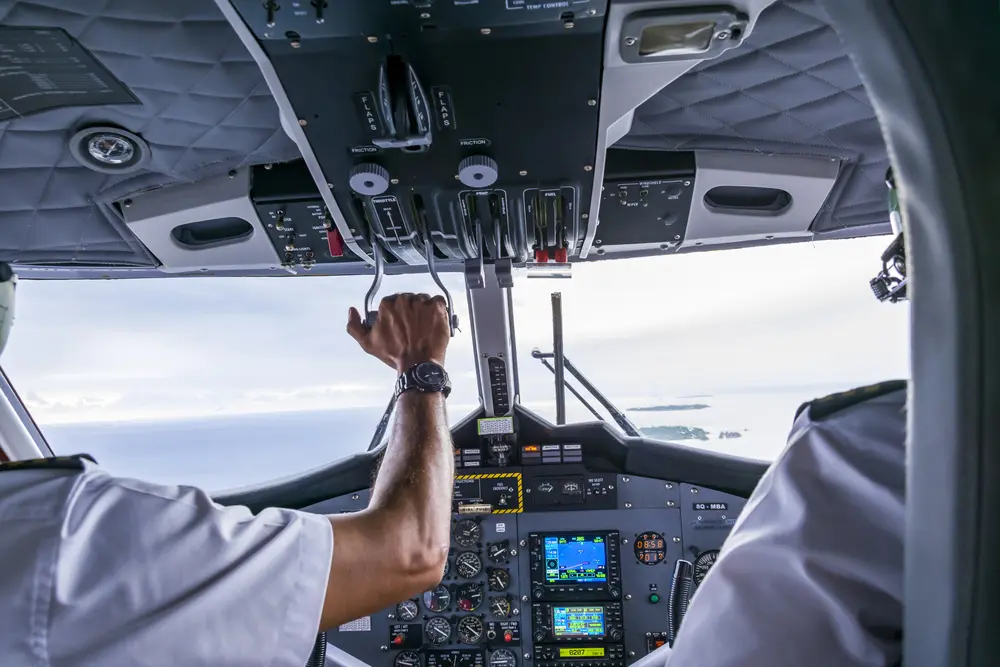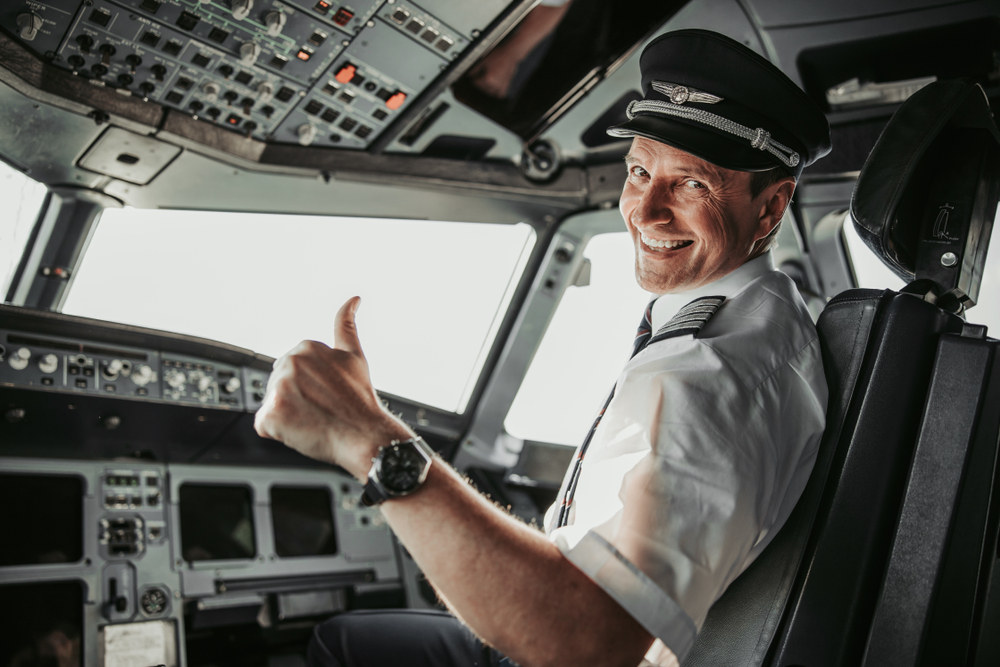It is one of the most common questions asked by those fascinated with aviators’ lives: how much do pilots actually work? Unlike a traditional 9-to-5 job, a pilot’s schedule is shaped not only by airline needs but also by strict international regulations, biological limits, and constantly shifting operational demands tied to departure times. From ICAO and EASA to the FAA, airlines rely on finely tuned frameworks to determine how long pilots can fly, how often they must rest, and how their monthly and yearly totals are capped.
But “how many hours a day do pilots work?” is not a simple equation. It is a mix of flight duty periods, irregular weekends, and airline-specific scheduling practices that influence everything from routes to rest days. Here, we will break down what defines how many hours pilots spend in the air and how often they are off duty.
Table of Contents
Who sets the rules for pilot work hours?
Think pilots only work a few hours a day, then head to the beach? Or maybe you can imagine them clocking in endless shifts across time zones? The truth sits somewhere in between. To ensure flight safety and crew wellbeing, pilot work hours are shaped by international rules set by ICAO, EASA, and FAA. ICAO creates global guidelines and recommendations for pilot work hours. EASA and FAA use these as a base but make their own specific rules and enforce them in Europe and the U.S. respectively.
Pilot working hours are regulated under ICAO Flight and Duty Time Limitations (FDTL). The FDTL is a set of rules, which prevent pilot fatigue by limiting the ratio of how long flight crew can fly and how much rest they must get.
An important role here plays the Maximum Flight Duty Period, which describes what is the longest stretch of time a pilot is allowed to be on duty. The Maximum Flight Duty Period starts when pilots report to work (to the airport or other location set by an airline) until the moment they finish their last task after landing. This period covers all pre-flight duties such as pre-flight briefings or aircraft walk-arounds, as well as actual flying hours and post-flight tasks, like filling out paperwork and debriefing.
Curious about what a pilot’s regular day looks like? Find out all the details in the article.
Another vital term in this context is the Maximum Daily Flight Time. It describes the most amount of time a pilot is allowed to fly in one day. This limit is there to make sure pilots do not get too tired, so they can stay alert. The exact limit can change depending on the type of flight and the rules in different countries.
What are the ICAO recommendations on FDTL?
Although ICAO does not set fixed pilot working hours, it provides recommendations to airlines to ensure flight safety through effective fatigue management. According to ICAO Annex 6, airlines are required to establish regulations that limit flight and duty times or implement a Fatigue Risk Management System (FRMS). The idea of FRMS is not only to limit flight hours, but also to consider other factors that influence a pilot’s alertness and performance, including sleep habits, time zone shifts, duty schedules, scientific data on fatigue, and pilot-reported signs of exhaustion.
As per ICAO recommendations, common cumulative limits include 100 flight hours within 28 consecutive days, 900 hours in a calendar year, and 1,000 hours over any 12 months.

Comparison of pilot work hours limitations: EASA vs FAA
EASA and the FAA both regulate pilot working hours, but they take slightly different approaches.
EASA provides a flexible set of rules on this topic. Depending on factors like how many crew members are on board, rest times, and crossing time zones, pilots can fly between 8 and 13 hours a day. However, this does not mean that the flight crew is allowed to work hundreds of hours per month. Monthly flight time is limited to 100 hours only and yearly limits are usually between 900 and 1,000 hours. Duty shifts can be extended to 14 hours in certain conditions.
How does this work in real life?
- The impact of start time. The time of day when a pilot’s duty period begins has a big influence. If a pilot starts the shift early in the morning or late at night, this means that the risk of fatigue rises, and the 14-hour duty extension is not allowed. According to EASA, the early morning period spans from 05:00 to 07:59 local time, while late-night covers the hours between 22:00 and 04:59 local time.
- Number of flight sectors/legs. The more take-offs and landings pilots perform during their duty period, the higher their workload becomes. The permitted duty time decreases as the number of sectors flown increases.
- Flight crew composition. When additional flight crew members are on board (augmented flight crew), longer duty periods are allowed since pilots can take rest breaks during the flight.
- Rest requirements. The rest period prior to duty must be at least equal to the length of the preceding duty or a minimum of 12 hours, whichever is longer. For longer flights or night duties, rest periods may be extended, sometimes up to 24 hours, to allow adequate recovery.
Meanwhile, FAA regulations, under 14 CFR Part 117, define stricter limits. Flight duty periods generally range from 8 to 14 hours with an extension. They can vary depending on start time and number of flight sectors. Maximum flight times are 8–9 hours for single-pilot operations and up to 9 hours for multi-pilot crews.
Similar to EASA regulations, monthly flight hours are limited to 100, and annual flight time cannot exceed 1,000 hours. Rest periods are also strictly defined. Airlines are required to ensure at least 10 consecutive hours of rest before the next duty period.
Both EASA and the FAA aim to reduce pilot fatigue, but EASA offers more operational flexibility through FRMS, while the FAA relies on defined limits.
Maximum Daily Flight Time: EASA vs FAA
| EASA | FAA | |
| Maximum Daily Flight Time | 8 to 13 hours | 8 to 9 hours single-pilot and up to 9 hours multi-pilot |
| Maximum Monthly Flight Hours | 100 hours | 100 hours |
| Maximum Annual Flight Hours | 900–1,000 hours | 1,000 hours |
| Minimum Rest Period | Equal to upcoming duty or 12 hours | At least 10 consecutive hours |
| Fatigue Management | FRMS encouraged and regulated | Standardized limits with limited support from FRMS |
Maximum Flight Duty Period (FDP): EASA vs FAA
| Regulator | Standard Maximum FDP (2 pilots) | Factors Affecting FDP | Augmented Crew FDP |
| EASA | Up to 13 hours | Start time, number of sectors, rest, time zones | Up to 18 hours (with in-flight rest) |
| FAA | Up to 14 hours | Report time, number of flight segments | Up to 17 hours (with augmented flight crew) |
Who has the right to extend a pilot’s working hours?
Under both EASA and FAA rules, the responsibility for managing pilot duty time lies primarily with the airline, but the ability to extend duty periods is handled differently in each system.
Under EASA
Under EASA regulations, the decision to extend a pilot’s duty period is made by the airline, following procedures outlined in the airline’s Operations Manual.
There are two types of extensions permitted:
- Planned extensions of up to one hour, which must be scheduled in advance following specific protocols.
- Unplanned (reactive) extensions of up to two hours, may occur due to unforeseen circumstances such as weather delays or technical issues. In such unplanned cases, the airline must carry out a risk assessment and ensure the event is documented in a post-flight report.
However, while the airline makes the operational decisions, the Captain plays a crucial role in assessing their own fitness to operate the flight safely. If a pilot feels too tired to continue safely, they have both the right and the duty to decline the extension.
Under FAA
In contrast, the FAA does not allow extensions to the legally defined FDP limits. Once the scheduled flight duty time reaches the maximum allowed under Part 117, the flight cannot legally depart, even if delays are unexpected.
The airline holds the responsibility of scheduling all duties within these fixed limits, and pilots must personally confirm they are fit for duty before each flight. If a pilot feels fatigued at any point, they are required to report it immediately, and the airline must remove them from duty.
Unlike under EASA requirements, there is no flexibility for reactive or planned FDP extensions under FAA rules. Only the rest and duty limits defined in the FAA regulations can be used.
| EASA | FAA | |
| Decision maker | Airline (within Operations Manual limits); a pilot can refuse | Airline (must stay within strict limits) |
| Pilot role | Can legally refuse due to fatigue | Must declare fitness; cannot exceed FDP |
| Is extension allowed? | Yes, up to 2 hours (reactive) | No FDP extension is allowed |
| FRMS involvement | Supports flexibility and risk-based decisions | Optional, not a basis for FDP extensions |

Figuring out exactly how many hours a pilot works each day is not as simple as it sounds. It can change dramatically depending on the type of flight, the region they are flying in, the local regulations, and even unexpected events that pop up along the way. What does not change is the strong regulatory system in place that protects pilots, passengers, and crew by setting clear limits on duty hours and ensuring pilots have the rest they need. This framework is the backbone of safety in the skies!

